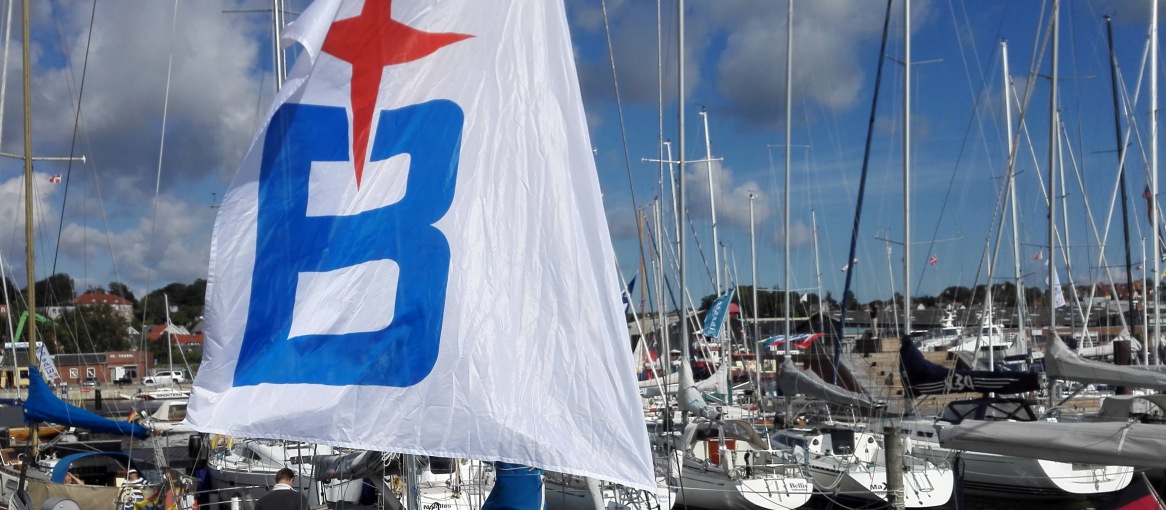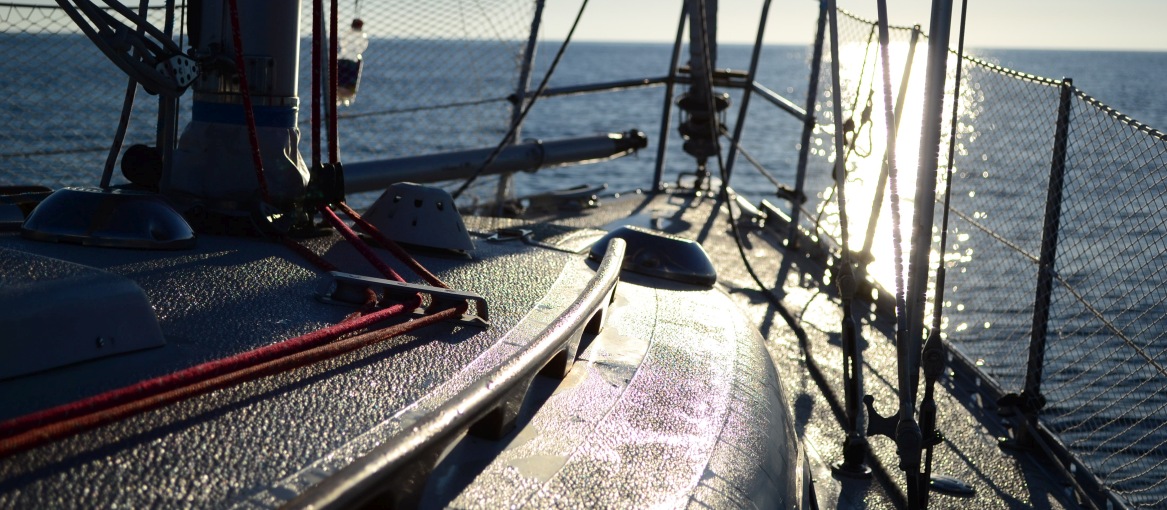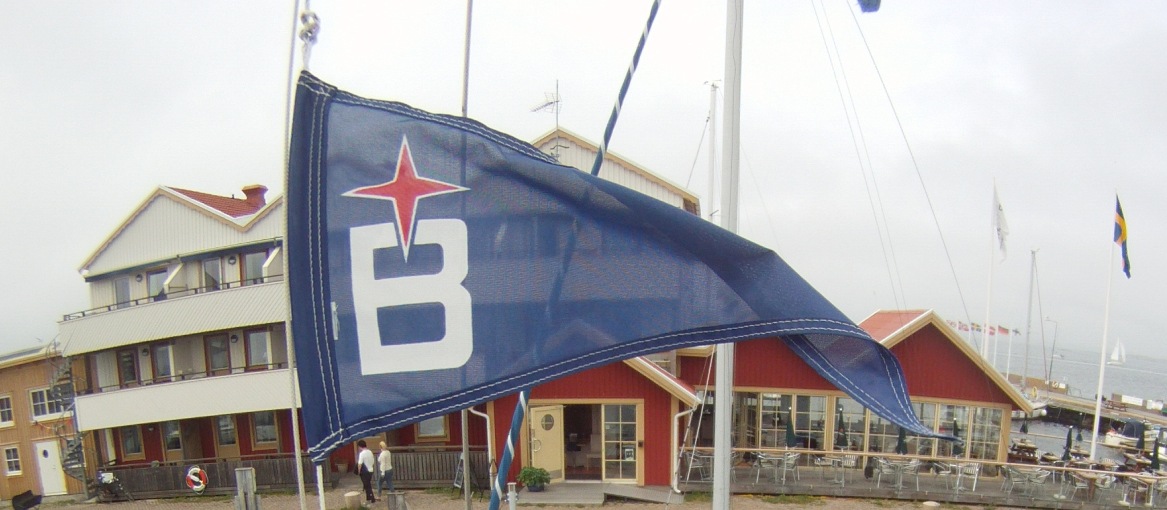Grundsätzlich ist das Seminar des DSV/RVS sehr zu empfehlen. Es macht Freude auf die kommende Saison und motiviert gegen Ende des Winters Arbeit u.a. in das Unterwasserschiff zu stecken. Für überschauliche 40 EUR bekommt man einen Tag lang Tipps und Hinweise um das eigene Boot zu optimieren (z.T. ohne grossen finanziellen Aufwand) und zur Saison- und Trainingsplanung.
Einige Punkte sollen deshalb hier für alle Ballad Segler, die z.B. zum ersten Mal am WELCOME RACE teilnehmen wollen (oder auch nur um bei der Club Regatta besser abzuschneiden) einmal zusammen gefasst werden.
Ein wichtiger Punkt, ist - vor allem bei gemischten Bootsklassen - für Ballads die Überlegung eventuell einmal ein ORC Club Zertifikat zu beantragen, denn hierbei wird u.a. das Bootsgewicht (das sicherlich über die Jahre zugenommen hat) berücksichtigt bei der Vergabe der Rennwerte, so dass man im Vergleich zu anderen Bootstypen ggf. bei Verrechnung besser abschneidet (ohne Garantie ;-) ).
Nun zu den Stellschrauben vor der Saison/Regatta:
1. Unterwasserschiff - Antifouling Anstrich überdenken - ggf. Unebenheiten spachteln, in jedem Fall Schleifen möglichst in Längsrichtung und den Anstrich am Ende nochmal anschleifen. Ein glattes Unterwasserschiff ist nicht zu unterschätzen. z.B. mit 400er oder 1000er (!!) Schleifpapier nacharbeiten. Ggf vor der Regatta mit Teppich das Unterwasserschiff vom Schleim befreien (oder abtauchen).
2. Unterwasserschiff Borddurchlässe ggf. ersetzen (wenn dieses zB sowieso ansteht) bzw. anspachteln um die Anströmung zu optimieren. (Beispiele für Strömungssoptimale Borddurchlässe: z.B. von  Forespar Flowtech, flache Borddurchlässe von z.B.
Forespar Flowtech, flache Borddurchlässe von z.B.  Toplicht zum versenken der Stirnfläche, bzw. kegelförmige Durchlässe von
Toplicht zum versenken der Stirnfläche, bzw. kegelförmige Durchlässe von  Spartan Marine (Vertrieb ebenfalls via Toplicht). Die teure Variante von Forespar schliesst hierbei zusätzlich die Öffnung - ob dieser Aufwand betrieben werden soll, muss jeder selbst entscheiden).
Spartan Marine (Vertrieb ebenfalls via Toplicht). Die teure Variante von Forespar schliesst hierbei zusätzlich die Öffnung - ob dieser Aufwand betrieben werden soll, muss jeder selbst entscheiden).
3. Anhänge, wie z.B. die Propellerwelle und den Propeller optimieren. z.B. VOR der Wasserung die Welle im Schiff markieren, so dass u.U. die genaue (optimale) Propeller-Ausrichtung vor Regattastart gewählt werden kann.
4. Gewichtstrimm - unterscheiden zwischen Race und Cruising Mode. Jochen Bierschenk hat es als erfolgreichster Ballad Regattasegler bereits vorgemacht, wenn er darauf geachtet hat, dass im Petroleumkocher nicht mehr als der obligatorischen Milliliter mitgenommen wurden um den Klassenvorschriften zu entsprechen. Den Wassertank entsprechend natürlich leeren.
Stellschrauben/Tipps auf dem Wasser:
I. Ruderwinkel an der Kreuz beachten (soll im Standard <5°)
II. Wenig Ruderausschläge (im Sitzen steuern ggf. Ausleger ablegen um unnötige Bewegungen zu vermeiden)
III. Es gibt nie zu viel Trimmfäden / Telltales an Gross und Vorsegel
IV. Keiner fährt als Gast mit! Raus mit dem Gewicht auf die Kante (Hike harder!)
V. Riggtrimm beachten - ggf mit den Ballad Veteranen und Podiumsseglern der letzten Jahre einmal kurzschliessen (Email Kontakt ggf über die Ballad.de Redaktion)
VI. Nicht zuviel trainieren! Zeit ist für die Crew kostbar! Ggf nur kurz vor der jeweiligen Regatta mit der Crew, die auch mitsegelt.
VII. Startraining z.B. mit Tonne anlaufen (z.B. 2min Gefühl entwickeln bzw. vor dem Start bei den Windbedingungen testen) Hinweis: Vor dem Start des Welcome Race ist es relativ voll an der Kiellinie. Hier sollte das Training einen Tag vorher erfolgen. (Möglichst gleiche Windbedingungen)
Es gab weitere Tipps zu Saildrive bzw. optimalen Kielformen etc. Da diese Punkte aber der Ballad Klassensvorschrift entsprechen sollen beim WELCOME RACE, wird hierdrauf nicht eingegangen.
Ebenso gaben die North Sails Experten aus Hamburg reichlich gute Tipps zum Leicht-, Mittelwind- und Starkwind-Trimm.
Es sei nochmal auf den Trimmtipp Artikel auf Ballad.de verwiesen.
Viel Spass und Erfolg für die Vorbereitung und die Saison 2020!
Wir freuen uns auf viele Ballads in Kiel!
Beste Grüsse
Jörg Wille
-------------------------------------------English-----------------------------------------------------
Basically the seminar of the DSV/RVS is highly recommended. It is a joy to look forward to the coming season and motivates to put work into the underwater hull towards the end of the winter. For a manageable 40 EUR you get a day of tips and advice on how to optimize your own boat (sometimes without great financial expenditure) and on season and training planning.
Some points should therefore be summarized here for all Ballad sailors who want to participate for the first time in the WELCOME RACE (or just to do better in the Club Regatta).
An important point is - especially for mixed boat classes - to consider applying for an ORC Club or even international certificate for Ballads, because the weight of the boat (which has certainly increased over the years) is taken into account when awarding the race values, so that compared to other boat types you might be better off (without guarantee ;-) ).
Now to the set screws before the season/regatta:
1. underwater hull - rethink the antifouling paint - if necessary fill in unevenness, in any case sand in longitudinal direction if possible and sand the paint again at the end. A smooth underwater hull should not be underestimated. For example, rework with 400 or 1000 (!!) grit paper. If necessary, clean the underwater hull from slime (or submerge it) before the regatta with carpet.
2. replace underwater passages if necessary (e.g. if this is due anyway) or fill them with filler to optimise the flow. (Examples for flow-optimized board diffusers: e.g. from Opens external link in new windowForespar Flowtech, flat board diffusers from e.g. Opens external link in new windowToplicht for sinking the front surface, or conical diffusers from Opens external link in new windowSpartan Marine (also sold via Toplicht). The expensive variant of Forespar additionally closes the opening - whether this effort should be made, everyone must decide for himself).
3. optimise appendices, such as the propeller shaft and the propeller. e.g. mark the shaft in the ship BEFORE ditching, so that the exact (optimal) propeller alignment can be chosen before the start of the regatta.
4. weight trim - differentiate between Race and Cruising Mode. Jochen Bierschenk, as the most successful Ballad regatta sailor, has already shown how to make sure that no more than the obligatory millilitres are carried in the kerosene stove to comply with the class regulations. Empty the water tank accordingly naturally.
Set screws/tips on the water:
I. Note the angle of the rudder at the cross (should be <5° in the standard)
II. Few rudder deflections (steer in a seated position, if necessary lower the outriggers to avoid unnecessary movements)
III. there is never too much trim / telltales on main and headsail
IV. No one is going as a guest! Put your weight on the edge (Hike harder!)
V. Pay attention to the rig trim - if necessary short-circuit it with the Ballad veterans and podium sailors of the last years (Email contact if necessary via the Ballad.de editorial office)
VI. Do not train too much! Time is precious for the crew! If necessary, only shortly before the respective regatta with the crew that also sails along.
VII. start training e.g. with ton (e.g. develop 2min feeling or test before the start in the wind conditions) Note: Before the start of the Welcome Race it is relatively full at the keel line. Here the training should take place one day before. (If possible same wind conditions)
There were further tips on saildrive or optimal keel shapes etc. Since these points should correspond to the Ballad class rules for the WELCOME RACE, they are not discussed here.
The North Sails experts from Hamburg also gave plenty of good tips on light, medium and strong wind trim.
Again, please refer to the trimming tip article on Ballad.de.
Have fun and success for the preparation and the season 2020!
We are looking forward to many Ballads in Kiel!
Best regards
Joerg Wille






